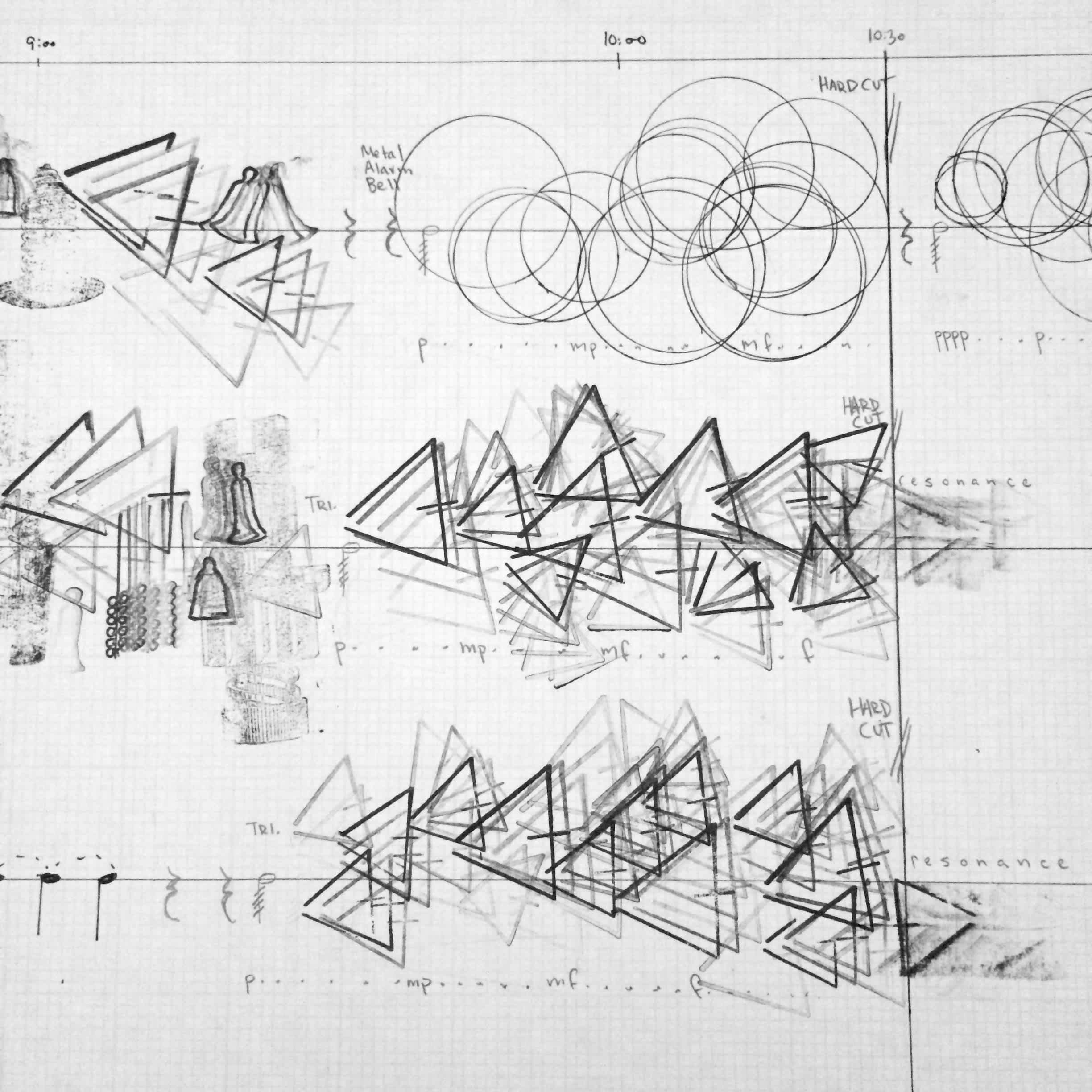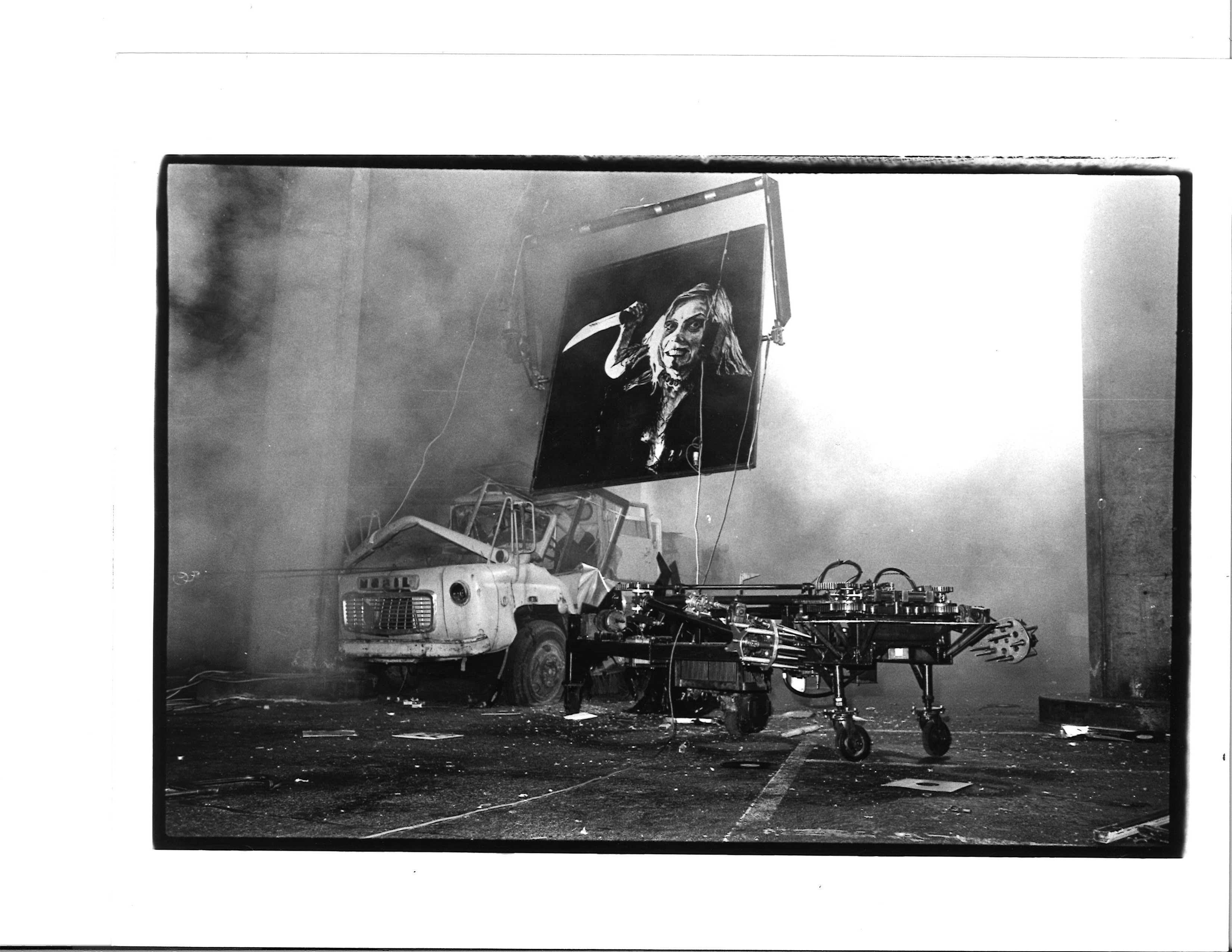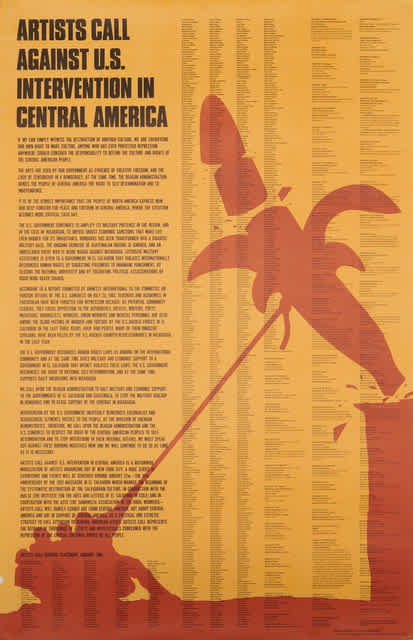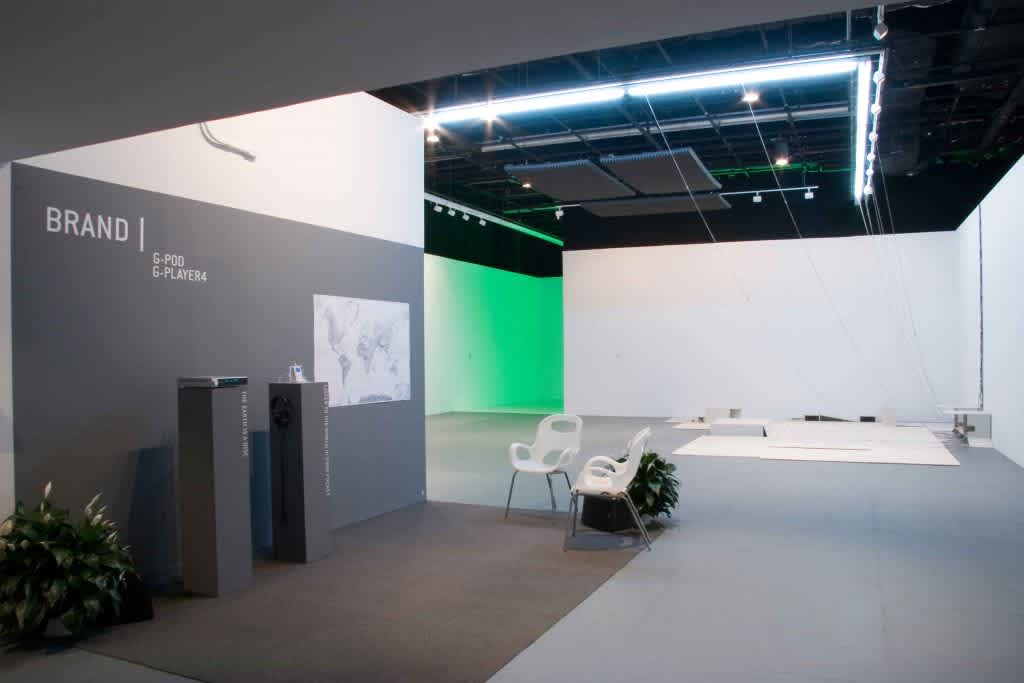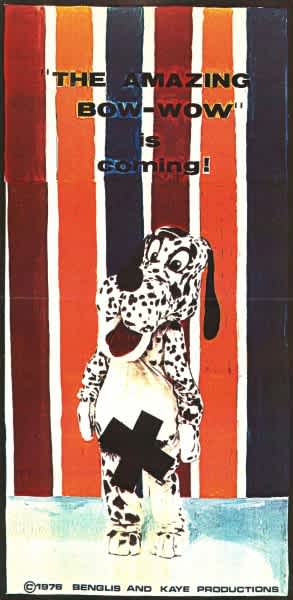
Oct 18 - Oct 20, 1976
The Amazing Bow-Wow:
Lynda Benglis, Stanton Kaye
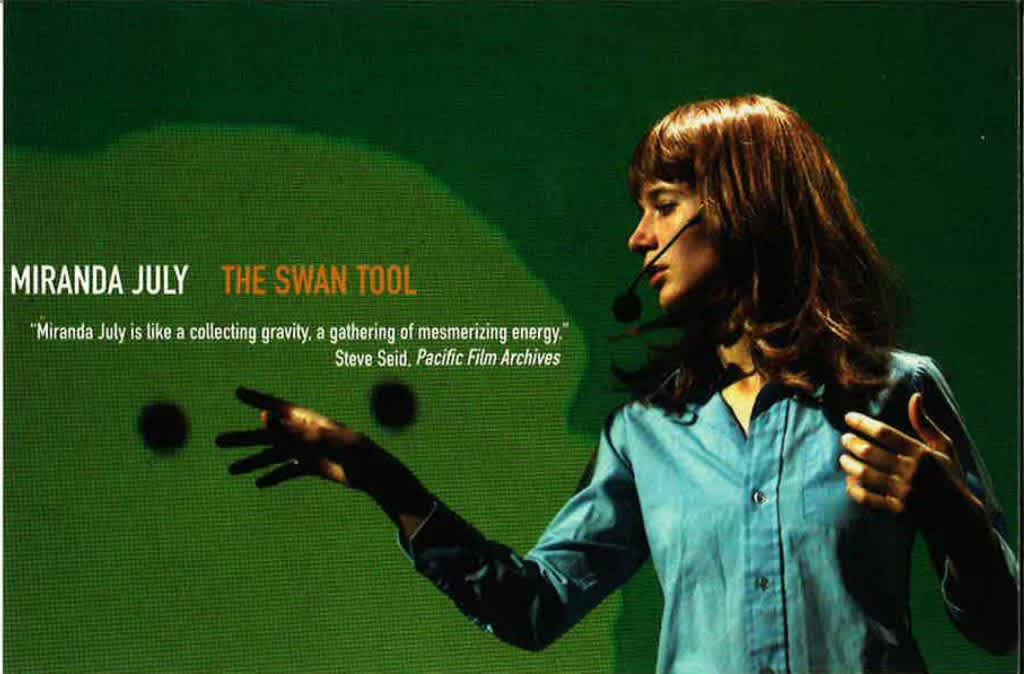
Dec 5 - Dec 5, 2001
The Swan Tool:
Miranda Juy

Dec 3 - Dec 6, 1986
All desire is the result of imitation. The mimetic theory of desire, originated by French anthropologist René Girard, refers to human desire as a product of a mimetic process in which people imitate models who endow objects with value. Mimetic theory moves through a four-stage process of desire, conflict, scapegoating, and cover-up. This Archival Spotlight by 2024 Curatorial and Archive Intern Christina Augustin brings together three programs in The Kitchen’s archive by artists Lynda Bengalis, Stanton Kaye, Miranda July, and Karen Finley, who, through varying methods of performance, work to break down the social constructions of desire as proposed by mimetic theory. Lynda Benglis and Stanton Kaye explore the resounding violence of gender hierarchy in imitative desire through short film *The Amazing Bow Wow* (1976) when human Babu cuts off the tongue of talking hermaphroditic dog Bow Wow in an aim for the sole affections of companion Rexina. Live-movie *Swan Tool* (2001) by Miranda July tackles desire as an innately isolating social construction when protagonist Lisa Cobb becomes unable to decide whether she wants to live or die, buries herself in her backyard, and then continues to live and work, keeping up appearances. Through monologues on womb envy, and the oppressive nature of motherhood, Karen Finley’s *The Constant State of Desire* (1986) explores social desire by positioning male desirability as a prerequisite for womanhood. In examining, self-objectification, perceived male intrasexual competition, and forced seclusion through the lenses of the second and third wave feminist movements, these Kitchen artists situate mimetic desire as arbiter of a gendered violence in which there is no life or death.
Oct 18 - Oct 20, 1976
Dec 5 - Dec 5, 2001
Dec 3 - Dec 6, 1986
This Archival Spotlight by 2023-24 Curatorial and Archive Intern Olivia McKayla Ross reflects on programs in The Kitchen’s archive where artists utilize their practice to make sense of technologies of war and asymmetrical power. The timeline of America’s technological advancement is the timeline of our military history—from the ARPANET of the early '70s to modern GPS navigation, to even everyday items like superglue and saxophones. We are “saved” in a “wireless cloud” whose terms of use we do not read, and technological violence, which is real, becomes abstracted. With giant construction machines and pyrotechnics, the Bay Area-based Survival Research Laboratories’ 1988 performance of *The Misfortunes of Desire* (Acted Out at an Imaginary Location Symbolizing Everything Worth Having) in Shea Stadium walloped it’s audience with a robot battle with a violent scale Americans usually only see on the news. Lea Bertucci’s *Mass of Dissolution* (2019) utilized percussionists for beats resembling helicopter wings, marching soldiers, drum corps fragments, and the sounds of industrial equipment towards a prayer against the empty savagery of military-industrial power. As part of *Artists Call*, a nationwide mobilization of artists and intellectuals organizing out of New York City in 1984, The Kitchen platformed Central American documentary art and anti-propaganda, such as Agrarian Reform TV (from Nicaragua), Guatemalan Personal Testimonies, Sandinista TV and more, citing "If we can simply witness the destruction of another culture, we are sacrificing our own right to make culture." Lastly, sound art pioneer Christina Kubisch’s work *New York Electrical Walk*, loaned to the Kitchen as part of a 2006 sound art exhibition *Invisible Geographies*, turned the quiet flow of electromagnetic power into sonics through transduction, revealing a massive surveillance infrastructure that sits on top of the city. These Kitchen artists refuse the magician’s act by reintroducing audiences to the invisiblized technologies of cameras, sound systems, and robotics, disrupting abstraction by foregrounding the martial context these technologies are used to support––the martial context we live, work, and play inside of.
Jan 24 - Jan 19, 2019
May 17 - May 17, 1988
Jan 17 - Jan 28, 1984
Sep 9 - Oct 14, 2006
